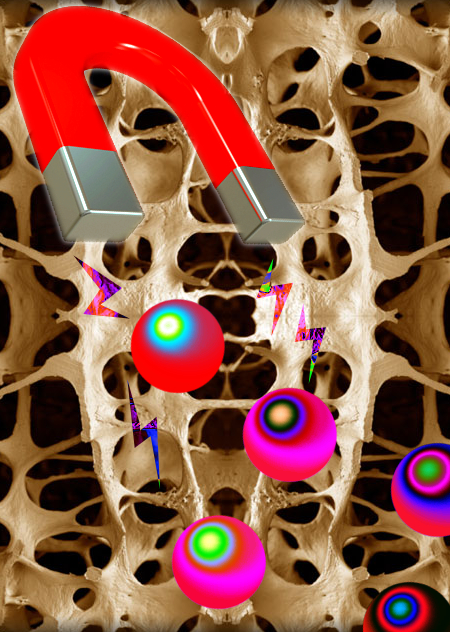Magnetic fix wrangles nano-bits for bone growth
 Researchers in the UK are working on a way to regenerate bones using nanoparticles controlled by magnets.
Researchers in the UK are working on a way to regenerate bones using nanoparticles controlled by magnets.
Bone tissue regeneration experts believe they have made a significant breakthrough for sufferers of bone trauma, disease or defects such as osteoporosis.
Medical researchers from Keele University and Nottingham University are using magnetic nanoparticles coated with targeting proteins can stimulate stem cells to regenerate bone.
In recent tests, they were able to deliver the cells directly to the injured area, remotely controlling the nanoparticles to generate mechanical forces and maintain the regeneration process through staged releases of a protein growth stimulant.
The current method for repairing bone that cannot heal itself is through a graft taken from the patient.
Unfortunately, this can be a painful, invasive procedure, and when the area that needs repair is too large or the patient has a skeletal disorder such as there can sometimes be a lack of healthy bone for grafting.
So spurring the growth of new bone through injected stem cells is an area of great interest to medical researchers.
Much progress has been made, but a major hurdle remains – finding an appropriate means to stimulate the differentiation of the stem cells so they become the quality of bone tissue needed in a quantity large enough to treat patients effectively.
“Injectable therapies for regenerative medicine show great potential as a minimally invasive route for introducing therapeutic stem cells, drug delivery vehicles and biomaterials efficiently to wound sites,” study leader Dr James Henstock says.
“In our investigation we coated magnetic nanoparticles with specific targeting proteins then controlled them remotely with an external magnetic field to simulate exercise. We wanted to learn how this might affect the injected stem cells and their ability to restore functional bone.”
The team conducted their tests using two models: chicken foetal femurs and tissue-engineered collagen hydrogels.
In both instances the results showed an increase in bone formation and density without causing any mechanical stress to the construct or surrounding tissue.
“This work demonstrates that providing the appropriate mechanical cues in conjunction with controlled release of growth factors to these injectable cell therapies can have a significant impact on improving bone growth. It also could potentially improve tissue engineering approaches for translational medicine” Dr Henstock said.








 Print
Print